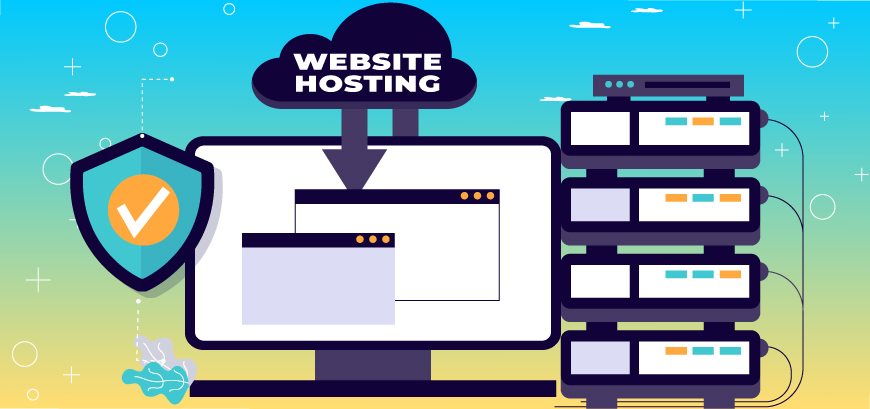Web application security is of paramount importance, especially when it comes to virtual dedicated servers. Inadequate security measures can lead to severe risks and consequences. A compromised web application can result in data breaches, unauthorized access, and even downtime, causing damage to the reputation and trust of the business. Therefore, implementing robust security practices is crucial to safeguard sensitive data, protect user privacy, and ensure the uninterrupted availability of web applications on VPS and virtual dedicated servers.
Understanding Web Application Security:
Understanding Web Application Security is crucial to protect user data, maintaining reputation, and avoiding legal issues. It involves safeguarding web applications from common vulnerabilities like cross-site scripting (XSS), SQL injection, and cross-site request forgery (CSRF). Web design plays a significant role in ensuring security by implementing secure coding practices, input validation, and output encoding. Neglecting web application security or cybersecurity can result in compromised user data, damaged reputation, financial losses, and legal consequences. Therefore, developers and designers must prioritize web application security to create a safe and trustworthy online environment for users.
Choosing a Secure VPS Hosting Provider:
When choosing a VPS hosting provider for website development, it’s crucial to prioritize a reputable and secure provider. Consider factors like robust security measures, stringent access controls, and server-hardening practices. By researching customer reviews and evaluating security features, you can make an informed decision. Buying from a secured VPS service provider ensures protection against potential threats, safeguarding your website’s data and integrity. This selection process is critical as it lays the foundation for a secure hosting environment, providing peace of mind and allowing you to focus on efficient website development.
Keeping Software Up to Date:
Regularly updating software components such as the operating system, web server, and application frameworks is crucial for maintaining web application security. Outdated software versions pose significant risks, including known vulnerabilities and a lack of patches, leaving your website exposed to potential attacks. To ensure timely updates, consider utilizing automatic updates or regularly checking for new releases from the software providers. By promptly applying updates, you can address security flaws, improve performance, and ensure compatibility with the latest security standards, safeguarding your web applications and protecting user data from potential threats.
Implementing Strong Authentication and Access Controls:
Strong authentication mechanisms, like multi-factor authentication (MFA) and password policies, are significant in web application security. MFA adds an extra layer of protection by requiring multiple forms of verification. Password policies enforce strong password practices, reducing the risk of unauthorized access. Least privilege access and proper user management limit user privileges to only what is necessary, minimizing potential vulnerabilities. Secure protocols like SSH for remote server access encrypt communication, preventing eavesdropping and unauthorized access. Implementing these measures enhances security, protects sensitive data, and mitigates the impact of potential security breaches on web applications hosted on a VPS.
Enforcing Secure Coding Practices:
Developers play a crucial role in ensuring secure code for web applications. By following best practices such as input validation, output encoding, and parameterized queries, common vulnerabilities like SQL injection and cross-site scripting (XSS) can be prevented. It’s recommended to utilize security-focused development frameworks and tools that offer built-in security features and libraries to assist developers in writing secure code. These measures enhance the overall security of web applications, reduce the risk of potential attacks, and protect user data from exploitation. Prioritizing secure coding practices contributes to a robust and trustworthy web development process.
Regular Security Audits and Penetration Testing:
Regular security audits and penetration testing are vital for maintaining robust web application security. By conducting these proactive assessments, vulnerabilities can be identified and addressed promptly. Security audits assess the overall security posture, evaluating configurations, access controls, and potential weaknesses. Penetration testing simulates real-world attacks to uncover vulnerabilities and validate the effectiveness of security measures. Identifying vulnerabilities proactively allows for timely remediation, reducing the risk of exploitation and data breaches. Engaging professional security testers or utilizing automated vulnerability scanning tools ensures comprehensive assessments and accurate results.
Monitoring and Incident Response:
Continuous monitoring is essential for detecting and responding to security incidents promptly. Log monitoring enables the tracking of system and application activities, aiding in the identification of suspicious behaviour and potential breaches. Intrusion detection systems (IDS) detect and alert unauthorized access attempts or malicious activities. Having a well-defined security incident response plan ensures a coordinated and effective response to security incidents. Promptly addressing and mitigating security breaches limits their impact and minimizes potential damage to web applications and sensitive data.
Conclusion:
In conclusion, prioritizing web application security on a VPS is of utmost importance. This is because a VPS reduces a page’s loading time thereby contributing to the site’s SEO. Regular security audits and penetration testing help identify vulnerabilities proactively, ensuring timely remediation. Continuous monitoring, supported by log monitoring and intrusion detection systems, enables the detection and response to security incidents. Developers must follow best practices, such as secure coding techniques, input validation, and output encoding. Staying updated with the latest security trends and utilizing security-focused web development frameworks and tools can significantly enhance web application security. By implementing these measures, developers can create a safe and trustworthy online environment, protecting user data and maintaining the reputation of their web applications.





